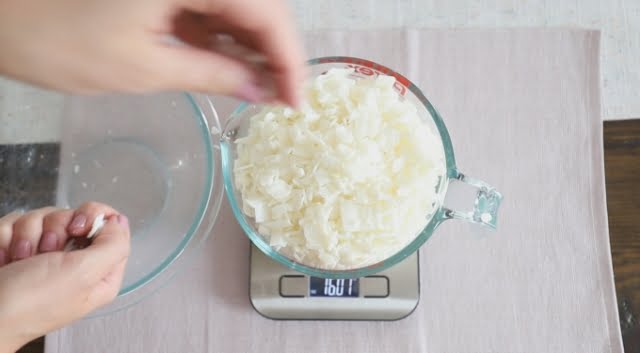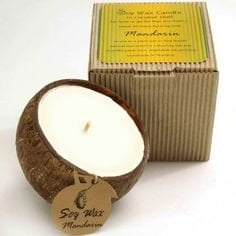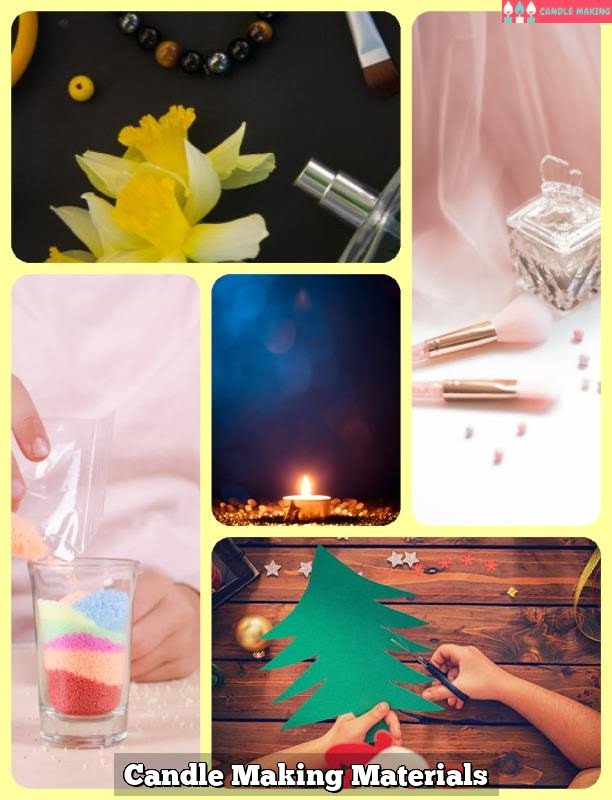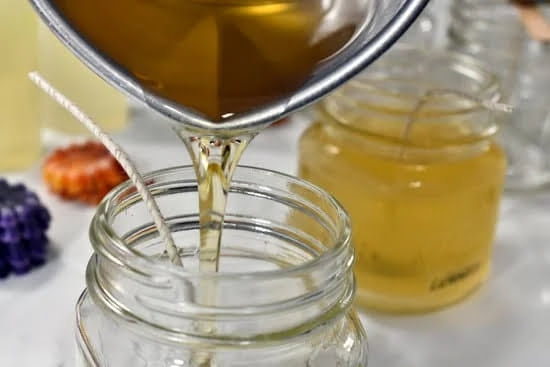Candle making has been around since ancient times, with the oldest known evidence of candle making dating back to 3rd Century China. During this period, candles were typically made from tallow and beeswax, both of which are excellent raw materials for candle making. It wasn’t until much later in the medieval period that candles were created from more exotic materials such as nut oils and resins.
By the 18th century, candle makers had access to a wider variety of raw materials, including paraffin wax. All of these materials have stood the test of time, providing folks today with the perfect ingredients for creating their own beautiful handmade candles.
These days, there is an array of amazing candle making raw materials available on market. Paraffin wax remains incredibly popular and can be used to create a number of different types candles (including tapers and votives). Soy wax is another common material used in modern candle making – it’s natural and clean burning qualities make it ideal for those looking for an eco-friendly alternative to paraffin wax.
Palm wax and beeswax are two additional popular options typically being used by hobbyists looking to make their own unique creations using these premium quality materials. Aside from candles, other objects (such as soaps) can also be crafted with many of these raw materials as well.
No matter your intended purpose for crafting with these amazing candle making raw materials, it’s important to take care when sourcing your supplies so that you get the best possible ingredients for your creation. Read customer reviews online or ask experienced crafters about their preferred products; this way you can ensure your purchase meets your desired quality constraints while getting maximum value out of each purchase.
With great care given during this process you can rest assure that whatever stunning creation you decide to make will turn out exactly how you envisioned.
Overview of Candle Making Raw Materials
Candle making is a method of transforming wax and other raw materials into beautiful, fragrant candles. Depending on the desired end result, there are numerous raw materials used to craft unique and interesting candles including dyes, molds, wicks, fragrances and more. Here is an overview of some common candle making raw materials:
Wax
Wax is one of the most important ingredients when it comes to candle making. Paraffin and soy wax are two popular varieties used in the craft. Paraffin is petroleum-based and outperforms soy in terms of scent throw and burning temperature while soy burns cleaner.
Dyes
Dyes or pigments can be used to add an eye-catching color to a candle or can be used to customize its look further with markings or swirls throughout the body. Candle dyes are available in liquid form but also come in water soluble blocks that dissolve when heated quickly down your stir stick for easy mixing with melted wax.
Fragrance Oils
Fragrance oils play an integral role in improving scent performance when producing candles as they add a strong scent to any melted wax base or resin mix at recommended usage rates discussed by their manufacturer(s). Scented oils usually contain high concentrations of synthetic aroma compounds as these molecules are less affected by heat than vegetable based essential oils sometimes found in natural fragrances from plants like flower petals or rosemary leaves for example.
4
Wicks provide items such as tealights and candles with fuel which gets ignited so that they may slowly burn over time until all their fuel has been exhausted by the flame(s). Commonly available paraffin based cotton wicks such as CD wicks provide superior reeds which when lit will create a characteristic classic dancing flame for customers to enjoy along with delightfully scented aromas evoked by added fragrances from added scented oils previously mentioned above.
- Paraffin Wax
- Soy Wax
- Liquid Dyes
- Water Soluble Blocks
- Synthetic Aroma Compounds
- Cotton Wicks (CD)
The Benefits of Using Preferred Candle Making Raw Materials
Candle making is a form of art that can be enjoyed by anyone. It requires the right materials and ample creativity to make something unique and beautiful that can light up your home or be given away as a gift. As with any craft, it is important to use the correct raw materials in order to ensure the quality of your finished product. Here are some of the benefits to using preferred candle making raw materials.
Environmentally Friendly
The most important benefit of choosing premium candle making raw materials is their environmental friendliness. By opting for high-quality waxes like beeswax, soy wax, or vegetable waxes, you are limiting your impact on the environment.
These materials tend to burn cleaner than paraffin wax or other chemical mixtures while still providing great scents. Moreover, they boil away cleanly when heated, reducing waste products and protecting the earth from pollutants found in standard petroleum-based waxes or other low-grade ingredients used in handmade candles.
Safety First
Another key perk of relying on preferred candle making raw materials is safety. While burning candles should always be done responsibly; whether in terms of open flames or heatless options such as melts and tarts, using quality ingredients can be beneficial in avoiding potential health risks posed by cheap plastics and petroleum derivatives.
This means you can feel confident when creating scented candles knowing that you have sourced materials that are safe and non-toxic for both you and your loved ones. Furthermore, eco-friendly wicks made from cotton or pure hemp rather than metal core wicks contribute to a more sustainable operation altogether, as does minimising artificial fragrances which may contain harmful chemicals as part of the production process further down the line.
Design Possibilities
Finally, there’s no denying that top quality candle making raw materials can open up even more possibilities for designers who want to create something eye-catching and unique with their own creations. Soy wax offers good adhesion qualities, allowing scent molecules to adhere safely without them dispersing into air during burning; this results in a longer fragrant burn life for your candles overall.
Vegetable waxes provide an increased range of textures including creamy layers perfect for producing layered looks – these textures absorb colour dyes well too. Moreover, high-grade methyl ester (HEME) provides superior colouration without altering scent throw during burning – meaning whatever design you choose will stay true over time without being overpowered by added colours.
Wax & Wax Blends
Wax is a necessary component of candle making as it is the material that actually forms the body of the candle when it hardens. Wax comes in many different varieties and textures, so it’s important to have an understanding of different types when considering which type of wax best fits your project.
Paraffin Wax
Paraffin wax is a popular choice for candles due to its abundance, cost-effectiveness and has been a classic choice for generations. This type of wax can range from soft and pliable to very hard depending on various levels of refinement but usually requires additives such as stearic acid or microcrystalline wax for binding strength. It also holds fragrance well, but in low concentrations due to their quick evaporation rate.
It has an opaque finish, good mold release qualities and typically has excellent colour retention. Popular examples include cosmetic waxes such as Carnauba and Beeswax.
Gel Wax
Gel wax is one of the more unique types available as its high transparency allows light to pass through the candle creating beautiful effects like embedded treasures or pictures inside a jar candle. Gel wax is made up mostly of mineral oil which makes it resilient to heat modifications allowing for use in both hot and cold processes.
It does need fragrance oils compatible with gel, otherwise scenting may affect its stability/transparency or cause improper burning of the candle or other issues related to compatibility.
It also generally needs higher temperatures while pouring in order to ensure proper gel formation due too its low melting point. An example would be combining Polyethylene (PE) resin with mineral oil as this creates an even more stable melting point than regular gel wax alone offers.
Vegetable Wax
Vegetable waxes are natural vegetable based ingredients derived from plants such as soybeans and palm oil kernels which can be molded into various shapes or sizes such as drops, cubes, cylindrical containersand even figures with great success on top mold surfaces without much prep work needed for embossing details.
These types of natural products burn slower than paraffin producing longer burn time with cooler flame temperature enhancing overall safety when lighting candles in addition offering environmental benefits associated with biodegradable fuel sources rather than non-renewable fossil fuels consumed by paraffin based products.
Examples would be Soy Max, IGI 4634 or variety blends outlining specific types preferred by users after various lab examinations reporting exact tests ran during production processes per major specifications requested before shipments leave warehouses across locations worldwide.
Wick Sizing & How To Choose The Right Type
When making your own candles, the type of wick and the sizing of it is critical to a successful outcome. The size of the wick which is chosen affects how fast it will burn as well as how strong or week its flame and smoke emission will be. Determining the right size wick for each candle type requires understanding how a few wicking factors play a role in selection.
Flame Size
The main factor when selecting a wick size is the flame size you would like to create. A larger flame can add drama to softer waxes which hold up better with a bigger flame, while smaller quietly burning flames can provide a peaceful atmosphere and are more appropriate for hard waxes such as paraffin which quickly produces much smoke with too large of a flame.
Burn Rate
After choosing the desired flame size, considering burning rate should be the next step when selecting an appropriate sized wick for your candle type. Burning rate is typically determined by two factors:
- the weight (size) of the container
- the melting point/pour temperature of wax used.
The heavier containers with harder Waxes require a smaller wick so that it burns properly and does not consume too much wax too quickly because if this occurs you may end up with pooling and tunneling issues.
While lighter containers usually need larger diameter wicks to make sure they have enough fuel/oxidation/heat being produced from its flame to consume all the melted wax up evenly before pooling happens at edges or leaving tunnels down into center all around circumference inside container walls.
Fragrances & Essential Oils
Fragrances and Essential Oils are a popular choice for many candle makers as these raw materials can help to give candles that added sense of ambience. However, choosing the right scent is not always easy as there are so many different types to choose from.
Essential oils
Essential oils are highly concentrated, volatile, concentrated liquids obtained from various parts of plants. They can come from any part of the plant such as leaves, roots, bark, nuts and fruits. Depending on where they have been sourced from and their extraction process will also determine the type of scent it produces when used in candle making.
For example, rose essential oil is known for being soft yet stimulating to those who use it. And lavender essential offers an earthy aroma which helps add some warmth to a room without feeling over powering.
Fragrance oils
Fragrance oils on the other hand offer a variety of choices when it comes to choosing a scent for your candles. Whether you’re into sweet smelling mixtures or floral aromas – fragrance oils allow you to combine different elements together in order to create something special.
Many mix with essential oils too as this can give your finished product that extra bit of “oomph.” when lit up in a setting – especially if trying out home events and parties with creative theme ideas.
When choosing either one or both
When choosing either an essential oil or fragrance oil (or both) it is important to match each one according its individual scent profile. As all fragrances have different scents, textures and notes – finding the right blend can be tricky but once you find it – you’ll be able to complement each other perfectly.
Additionally you should also remember to factor in wax melt points when mixing oils together and this could influence how your candle smells depending on whether using paraffin wax or soy wax specifically.
Dye Strips
When making candles, it is important to think about the many different types of dyes that can be used for decoration. Whether looking for a single colour or a mix of multiple shades, dye strips are an effective and versatile way to add a touch of personality and style to any candle.
One of the main advantages of using dye strips is the ability to manipulate and customize the overall look with a vast array of different hues and combinations. Dye strips are made up of fine pigments irregularly dispersed in a wax-based carrier which allows for smooth integration into the surface of molten wax.
Upon melting, dye strips release their pigments providing vibrant colours familiar to us all. Traditional dyes have great heat stability meaning they are suitable for use at both high and low temperatures. This makes them suitable for use whether making votive candles or large pillar candles as they can withstand temperature fluctuations without running or discoloring.
When colors don’t need to be as intense, natural dyes can also be used within candle production as they produce more subtle shades. Natural dyes create a sheer color effect when used on wax with light shining through them effortlessly; giving weightless coloration as opposed to conservatively dyed candles that can feel heavy or cloying in appearance.
Using dye strips when creating candles allows one to make beautiful pieces whilst being environmentally conscious due its biodegradable qualities due its mineral origin materials that decompose quickly after being exposed to water and oxygen over time; making them ideal if wishing to gain an organic edge with candle production.
For this reason, there really is no better choice in terms of both decorative purposes and environmental benefits when considering colouring options within candle production than using dye strips which provide endless possibilities for creative expression regardless of your own individual styles and tastes in colours and fragrances.
Tips for Choosing and Buying Candle Making Raw Materials
It can be easy to become overwhelmed while shopping for candle making raw materials, with so many products available it is important to get the necessary information before making a purchase. Choosing and buying candle making supplies is an important part of the candle-making process and must be taken seriously.
Research Your Options
Researching the different brands and types of waxes, wicks, fragrances, and dye before purchasing them is key. Look for reviews on each type of material in order to get a better idea between quality brands. It is always wise to compare prices so as not to break or exceed one’s budget when finally carrying out the purchase.
Seek Professional Advice
Many professional candle makers will provide their experience in which they have discovered works best when creating candles or other wax-based craft projects. When it comes to research, reading as much info about particular suppliers prior to selecting them as your supplier is also highly recommended. Taking this into account will help give you peace of mind that you are getting what you expect from your vendors.
Don’t Aim For Low Cost Over Quality
In some cases (e.g for a large quantity), price could be an issue when it comes to buying raw materials for candle-making ensuring low cost shouldn’t be the sole focus when choosing supplies for craft projects. Being economical on quality isn’t advisable since cheaper alternatives could mean inferior results later down the line; so it’s recommended finding a good balance between price and quality that fits within your budget.
Conclusion
Candle making is both an art and a craft. Raw materials are the foundation of any great candle, and sourcing quality ingredients can greatly impact the performance, scent distribution, and overall aesthetic of each candle. Quality ingredients can go a long way in producing aesthetically pleasing and highly fragrant candles that will bring comfort to friends and family alike.
When it comes to candle making, you want to ensure that you’re investing in higher-quality ingredients like sustainable coconut wax or soy wax. Soy wax is environmentally friendly because it is made with natural vegetable oils and does not contain hazardous petroleum by-products like some other waxes do. Coconut wax is another excellent option for candle makers because it boasts superior scent retention and results in a beautiful frosty finish on candles.
Both are favored options amongst candle makers due to their excellent ability to hold fragrance throughout the life of the candle. Another key ingredient is essential oil or fragrance oil as your primary source of fragrance for the finished product. Most recommended oils tend to be phthalate-free, silicone-free, vegan, and allergen compliant scents so they don’t cause harm to your customers or their environment when lit.
High-quality wicks are also important when crafting great candles; thermal crackling woods creates an amazing sound while burning while all-natural cotton yields better smoke production performance than other pre treated wicks on the market today. All these raw materials will make for an enjoyable scent experience that burns evenly without soot build up around the edges.
Investing in quality raw materials allows customers to craft unique quality candles with vibrant colors and strong scents that are sure to delight any customer’s senses. With all this being said, we urge you to invest in high-quality raw materials when creating your handmade candles-they will definitely make all the difference.

Welcome to my candle making blog! In this blog, I will be sharing my tips and tricks for making candles. I will also be sharing some of my favorite recipes.





